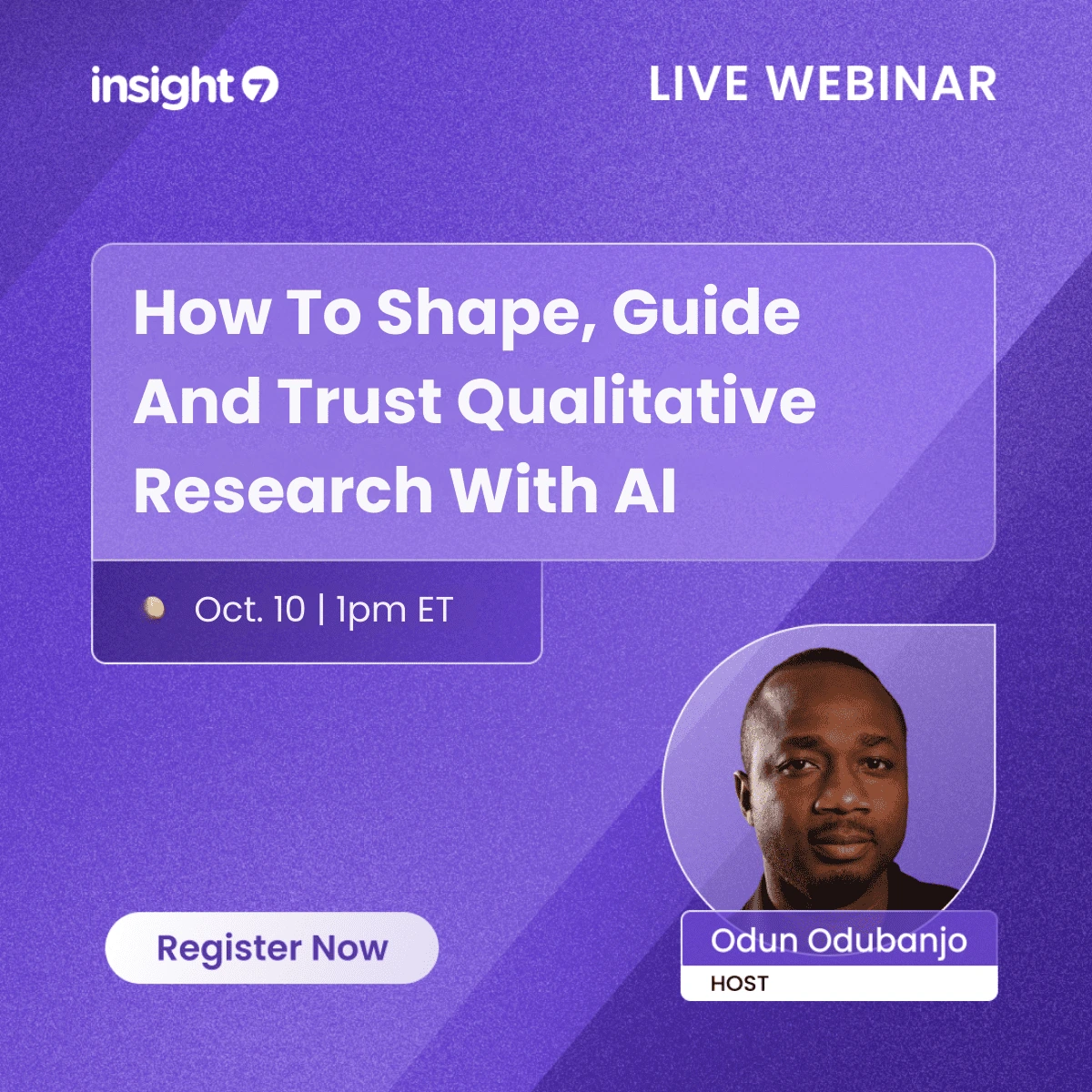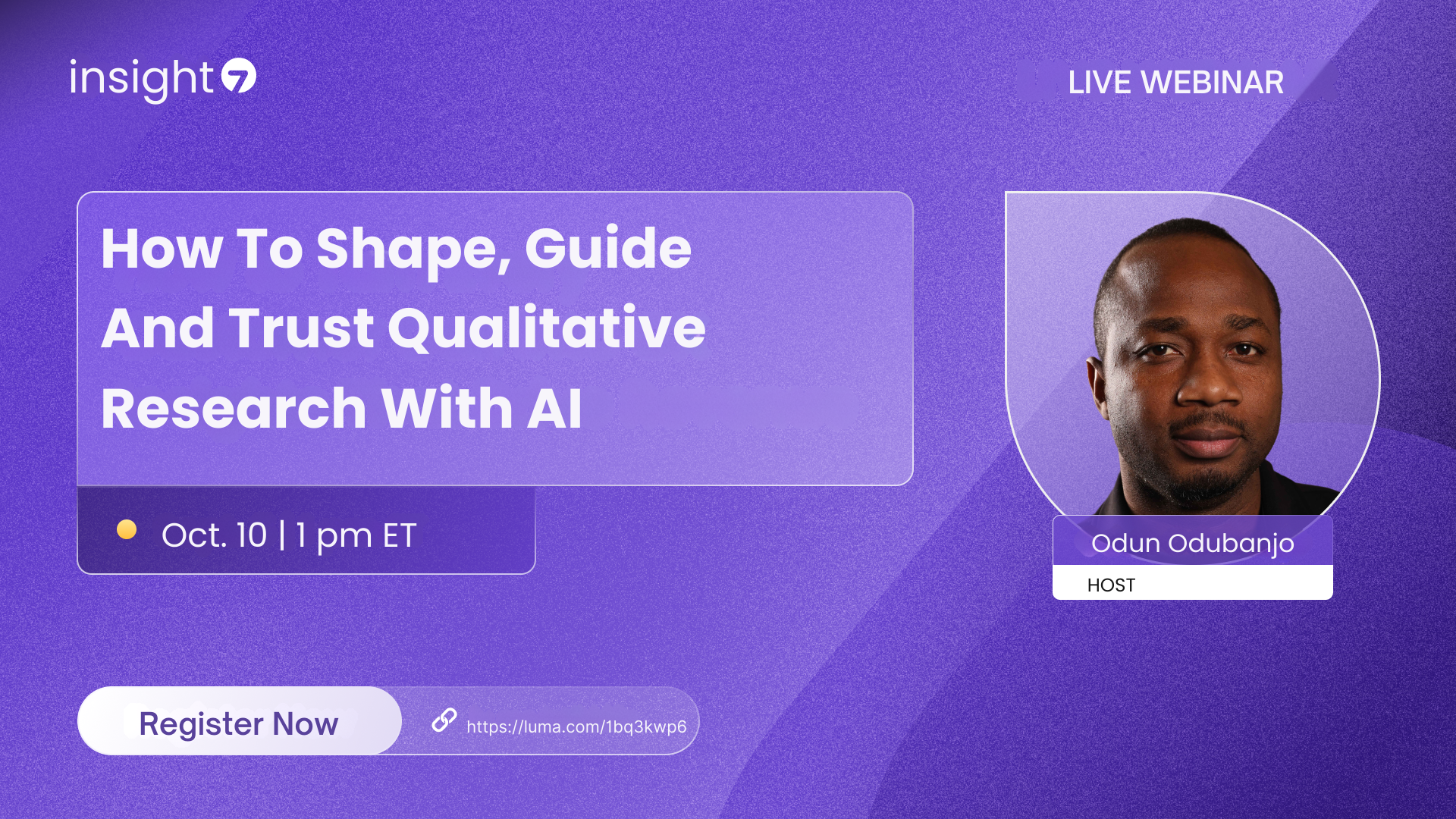5 Steps for Analyzing Qualitative Interview Data
-
Bella Williams
- 10 min read
Qualitative Data Analysis is an essential process for understanding complex human experiences within research. Engage yourself in the rich narratives shared through interviews, as they reveal underlying themes, emotions, and motivations. This analytical method allows researchers to dig deeper than mere numbers, transforming responses into meaningful insights that can inform decision-making.
Understanding how to analyze qualitative interview data involves several systematic steps. These steps guide researchers in extracting relevant information from rich textual data, ensuring that nuanced perspectives are not overlooked. By carefully examining participants' responses, researchers can unlock significant findings that drive impactful conclusions and actions.
The Importance of Qualitative Interviews
Qualitative interviews are vital for uncovering nuanced insights that quantitative data often misses. They provide a platform for participants to express their thoughts, feelings, and experiences in depth, allowing researchers to grasp the underlying motivations and concerns that shape behaviors. This richness of information is particularly valuable when analyzing qualitative data, as it enables a deeper understanding of specific contexts and individual perspectives.
Furthermore, the process of conducting interviews encourages a dialogue that can reveal unexpected themes or patterns. Each conversation has the potential to lead to new avenues of inquiry, ultimately enriching the overall analysis. By prioritizing qualitative interviews, researchers can gather evidence-based insights that resonate with real-world experiences, ensuring that their findings are not only relevant but also actionable. In summary, qualitative interviews serve as a crucial tool for achieving a comprehensive and insightful analysis, illuminating the complexities that define user experiences.
Step 1: Preparing Your Data
To begin your journey in Qualitative Data Analysis, the first step is to prepare your data meticulously. Start by gathering all relevant documents and transcripts from various sources. You can import data directly from your computer, Google Drive, or even transcribe interviews in real time. Make sure to include diverse inputs, such as articles or previously recorded transcripts from colleagues. This wide range of data will enrich your analysis and lead to more comprehensive insights.
Next, organize your data effectively. Label each transcript clearly, ensuring you can easily reference them later. Consider categorizing your data based on themes or topics to streamline the analysis process. This methodical preparation sets a strong foundation for the subsequent steps in your analysis, facilitating a focused and organized approach. By investing time in this initial stage, you enhance your ability to draw meaningful insights from your qualitative interview data.
Transcription: The First Phase of Qualitative Data Analysis
Transcription marks the initial step in qualitative data analysis, turning spoken words into written text. This process lays the groundwork for further exploration and interpretation of the data. By accurately transcribing interviews, researchers can capture the nuances of participants' voices, capturing essential information that might otherwise be overlooked. The clarity of the transcription directly impacts the quality of subsequent analyses, making it vital to ensure precision and attention to detail.
Once transcription is complete, the data is ready for analysis. Researchers can identify themes, patterns, and insights from the text, offering rich qualitative insights. This stage allows for a deeper understanding of participant perspectives, leading to informed conclusions and actionable outcomes. Engaging in qualitative data analysis not only enhances the richness of the findings but also contributes to a more comprehensive understanding of the context within which the data was collected. The importance of a detailed transcription cannot be overstated, as it serves as a reliable foundation for all future steps in the analysis process.
Ensuring Accuracy in Transcription
Accurate transcription is a foundational step in qualitative data analysis. It captures every word spoken during interviews, ensuring that critical insights are not lost. First, consider employing technology that allows for high-quality transcriptions. Using a reliable transcription service can enhance the accuracy of your text. Additionally, customize vocabulary settings to reflect specific terminology used in your research area. This optimization helps in achieving nearly flawless transcriptions.
Next, don’t overlook the importance of human review. While software offers efficiency, a manual check can catch discrepancies and contextual misunderstandings. This collaborative approach maximizes the fidelity of the data captured, which is essential for effective qualitative data analysis. Ensuring accuracy in transcription ultimately allows researchers to focus on drawing meaningful conclusions without the worry of misrepresented facts. Each step you take towards improving transcription accuracy enhances the overall quality of your qualitative findings.
Tools for Efficient Transcription
Effective transcription is crucial for qualitative data analysis as it lays the foundation for accurate interpretation. High-quality transcription tools can vastly improve efficiency, allowing researchers to focus on analysis rather than spending excessive time on converting audio to text. Many modern tools facilitate easy uploading, transcription, and editing, streamlining the entire process. With intuitive interfaces and powerful features, these tools can handle bulk uploads and deliver fast, reliable results.
When selecting a transcription tool, consider functionality, accuracy, and ease of use. Some popular options include automated transcription services, which utilize advanced algorithms to transcribe audio quickly. Others offer features like speaker identification, which can help clarify who said what during interviews. Additionally, look for tools that allow for easy integrations with other analysis software, making it easier to manage and analyze your data once transcribed. Ultimately, choosing the right tools can significantly enhance the quality and speed of your qualitative data analysis endeavors.
Step 2: Familiarizing Yourself with the Data
Familiarizing yourself with the data is crucial in the Qualitative Data Analysis process. Begin by immersing yourself in the interview transcripts and recordings to understand the context of each conversation. Take notes on key themes, patterns, and unique insights that emerge from the participants' experiences. This initial exploration allows you to connect with what was shared, providing a richer understanding of the material.
Next, try to categorize the data into manageable segments. This might involve creating thematic codes or labels based on recurring topics. Engaging with the data in this way helps uncover underlying narratives and feelings expressed by participants. By actively analyzing the content, you can identify significant trends that will inform your overall analysis.
Ultimately, getting comfortable with the data lays the groundwork for deeper insight and interpretation in the subsequent steps of your analysis.
Immersive Reading and Note-taking
Engaging in immersive reading and note-taking significantly enhances the analysis of qualitative interview data. This approach invites researchers to delve deeply into the narratives provided by interview subjects, fostering a rich understanding of their insights and experiences. Immersive reading involves not only comprehending the text but also reflecting on it actively, allowing the researcher to connect themes and patterns that may otherwise go unnoticed.
Effective note-taking is closely tied to this process, as it captures critical points and personal reflections. Consider the following steps to improve this practice:
- Active Engagement: Approach reading with questions in mind, prompting deeper connections with the material.
- Thematic Coding: Identify recurring themes in your notes, which can guide subsequent analysis.
- Visual Mapping: Create visual representations of key ideas, aiding memory and conceptual understanding.
- Summarization: Write concise summaries of each interview or document, highlighting essential points.
- Reflection: Spend time reflecting on your notes, allowing insights to evolve organically.
By integrating these strategies into qualitative data analysis, researchers can derive actionable insights that inform decision-making and enhance overall comprehension of participant perspectives.
Identifying Initial Themes in Qualitative Data Analysis
In the initial stages of qualitative data analysis, identifying initial themes is crucial. This process involves examining transcripts for recurring ideas, patterns, and expressions. These themes help to organize the data and reveal deeper insights into the participants' experiences and perspectives.
To effectively identify themes, follow these steps:
- Familiarization: Begin by immersing yourself in the data, reading through the interviews multiple times. This approach builds context and understanding.
- Coding: Assign labels or codes to significant phrases or sentences that encapsulate the essence of responses. These codes serve as the building blocks for themes.
- Collating Codes: Gather similar codes together, which may indicate an underlying theme. This organization helps to streamline the analysis process.
- Reviewing Themes: Assess the collated themes to ensure they accurately represent the data. Discuss them with colleagues for diverse input.
- Defining and Naming Themes: Finally, clearly define and label each theme, ensuring they reflect the core message of the data collected.
By following these steps, the analysis will yield significant insights that guide decision-making and enrich understanding.
Step 3: Coding the Data
In qualitative data analysis, coding the data is a critical step that transforms raw information into meaningful insights. This process involves identifying patterns, themes, and categories that emerged during your interviews. The goal is to systematically label sections of the data to facilitate better understanding and analysis. Without coding, it can be challenging to derive valuable findings from the wealth of qualitative information you’ve gathered.
To effectively code your data, consider these essential practices. First, familiarize yourself with your transcripts and notes. Reading through the materials multiple times helps uncover recurring themes. Second, develop a coding scheme that includes a mixture of predefined and emergent codes. Predefined codes are based on your research questions, while emergent codes arise during data review. Finally, consistently apply your coding scheme across all data sets to ensure reliability. By applying these practices, you can enhance the rigor of your qualitative data analysis and draw insightful conclusions from your findings.
Creating Codes for Qualitative Data Analysis
Creating codes for qualitative data analysis is an essential step in organizing your research findings. Coding involves categorizing and labeling data segments, which helps in identifying patterns and themes. Begin by immersing yourself in the collected interview data, reading through transcripts carefully to get a sense of the overall content. This deep engagement allows you to discern emerging themes relevant to your research questions.
Next, develop initial codes that encapsulate the key ideas presented in the data. Focus on capturing the essence of the participant's remarks, avoiding overly simplistic labels. As you identify codes, cluster similar ideas together to create organized groups. This approach facilitates deeper insights as you analyze your qualitative data. Remember, coding is an iterative process; be open to revising your codes as you delve further into the analysis. By meticulously crafting your codes, you lay a strong foundation for meaningful qualitative data analysis.
Open Coding vs. Axial Coding
Open coding and axial coding are essential techniques in qualitative data analysis that often complement each other. Open coding involves breaking down qualitative data into distinct parts, identifying key concepts, and assigning labels to these concepts. This initial step allows researchers to uncover various themes and patterns without preconceived notions. Essentially, it’s about getting familiar with your data from a broad perspective.
On the other hand, axial coding takes it a step further by reassembling the data in a meaningful way. This process involves examining relationships among the categories identified during open coding. By doing so, researchers can refine their understanding of how different themes interact with each other, ultimately providing a more cohesive interpretation of the data. Understanding the differences between these two coding methods enriches the qualitative analysis, ensuring insights derived from interviews are both nuanced and actionable.
Step 4: Identifying Patterns and Themes
Identifying patterns and themes is a crucial phase in qualitative data analysis. During this step, researchers sift through the collected interview data to find recurring ideas and concepts that emerge from participants’ responses. By grouping similar insights, you can uncover meaningful connections that may not be immediately obvious. This process enhances your understanding of the data and informs future decisions based on collective perspectives.
To effectively identify these patterns, consider these key approaches: First, conduct a thorough review of your transcripts or recordings to familiarize yourself with the content. Next, highlight significant quotes or statements that resonate with the core issues. After that, look for commonalities among participants’ experiences, noting how these insights correlate with existing theories or frameworks. Finally, document the identified themes comprehensively to create a structured narrative that reflects the participants’ viewpoints. This methodical approach not only aids in analysis but also ensures that the voices of participants are heard and valued.
Grouping Codes into Themes
As you embark on the journey of qualitative data analysis, grouping codes into themes is a crucial step. This process involves synthesizing your identified codes into broader categories that capture the essence of your data. First, carefully review each code and consider how they relate to one another; similarities and patterns will naturally emerge. Aim to identify overarching concepts that resonate significantly across your data set, as this will lead to richer insights.
Once you have your initial themes, refine them. It’s essential to ensure every theme aligns with your research objectives and captures the perspectives of your participants accurately. This might involve merging similar themes or breaking larger ones into more focused categories. Ultimately, this thematic organization supports clearer storytelling and enables deeper insights, allowing researchers to convey their findings effectively to various audiences.
Thematic Analysis in Qualitative Data Analysis
Thematic analysis is a foundational approach in qualitative data analysis, allowing researchers to identify and interpret patterns within qualitative data. This process begins by immersing oneself in the data, carefully reading through interview transcripts to gain a comprehensive understanding of the content. Engaging with the material helps to uncover significant themes that reflect the participants' experiences and perspectives.
Next, researchers need to systematically code the data, which involves tagging specific excerpts that relate to emerging themes. Once coding is complete, it's vital to review and refine these themes to ensure they accurately represent the underlying narratives. Finally, the interpretation stage connects the identified themes to the research questions, providing insights that can inform broader discussions or lead to actionable outcomes. By following these structured steps, thematic analysis becomes a powerful tool for drawing meaningful conclusions from qualitative interview data.
Step 5: Presenting Your Findings
Presenting your findings is a crucial step in qualitative data analysis, as it allows you to share insights effectively with your audience. Start by summarizing key themes and patterns identified during your analysis. Utilize visual tools such as charts, infographics, and slides to make your findings more engaging and easier to understand. This helps convey complex information in a digestible format, fostering better comprehension among stakeholders.
Additionally, consider the context in which you will present your findings. Tailor your presentation style to the audience’s needs and expectations, whether in a formal meeting or an informal discussion. Prepare to answer questions and support your conclusions with specific examples from your interviews. Engaging storytelling can further enhance your presentation, connecting the data to real-life implications and decisions. Overall, effectively sharing your qualitative findings is essential for driving understanding and action based on your research insights.
Reporting in Qualitative Data Analysis
When reporting in qualitative data analysis, clarity and coherence are paramount. Begin by outlining the key findings derived from the analysis, emphasizing themes that emerged from the data. It is essential to provide a transparent narrative that reflects the essence of the participants' experiences. Use direct quotes from interviews to enrich the report, making the findings more relatable and credible. Remember, the goal is to convey meaning rather than just present numbers.
Next, consider structuring your report to emphasize the context and implications of the findings. Discuss how the data informs existing theories or practices and highlight any unexpected insights that arose. This not only adds depth to your analysis but also invites further discussion among stakeholders. Conclusively, providing recommendations based on the findings can enhance the practical impact of your qualitative data analysis, guiding future actions or inquiries. A well-documented report can bridge the gap between qualitative data and actionable insights.
Utilizing Quotes and Narratives
In qualitative data analysis, using quotes and narratives is crucial for enriching the understanding of interview insights. Quotes from participants can illustrate key themes and provide evidence to support findings. By weaving these narratives into the analysis, researchers can impart the depth and context behind the raw data, making the information more relatable and impactful for the audience. This approach enables a more nuanced interpretation of results while ensuring that the voices of participants are heard and respected.
Moreover, identifying patterns within these narratives helps illuminate various perspectives and experiences. When analyzing qualitative data, it’s essential to prioritize authentic representation. Highlighting strong quotes not only emphasizes significant insights but also fosters a stronger connection between the research and its audience. By combining quotes with overarching narratives, analysts create a compelling story that conveys the essence of the participant's experiences, ultimately enriching the quality of the analysis.
Conclusion
In conclusion, understanding and implementing effective strategies for qualitative data analysis is crucial for deriving meaningful insights from interview transcripts. By following the five steps outlined throughout this document, researchers can ensure a thorough examination of their qualitative data, ultimately enhancing the quality of their findings.
The steps provide a structured approach to organizing, coding, and interpreting data. As a result, researchers can identify themes and patterns that reveal deeper insights into participants' experiences. Embracing these steps not only improves analysis but also contributes to more informed decision-making in various fields.
Summarizing the Qualitative Data Analysis Process
The qualitative data analysis process involves several steps to ensure proper understanding and interpretation of interview data. Initially, researchers collect interview transcripts and start by familiarizing themselves with the content. This is essential for grasping the overall narrative and the individual responses shared by participants. The next step is coding, where researchers label significant themes or concepts that emerge from the data. This allows for organized categorization and facilitates easier analysis.
As patterns begin to emerge, researchers synthesize these insights, identifying trends and key messages communicated by interviewees. The analysis often includes generating visual representations of the data to highlight sentiment and thematic connections. Ultimately, the qualitative data analysis process culminates in a rich summary of findings, offering deep insights into participant experiences and guiding actionable next steps for further exploration or implementation. By following these steps, researchers can derive meaningful conclusions from qualitative interviews.







